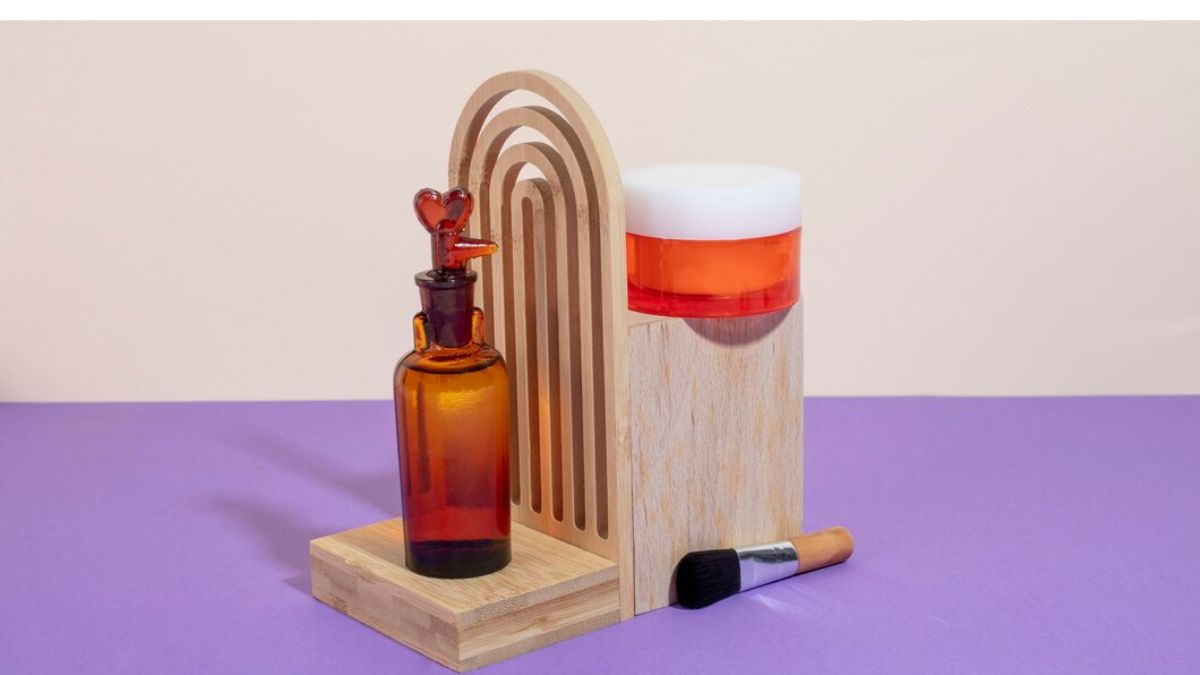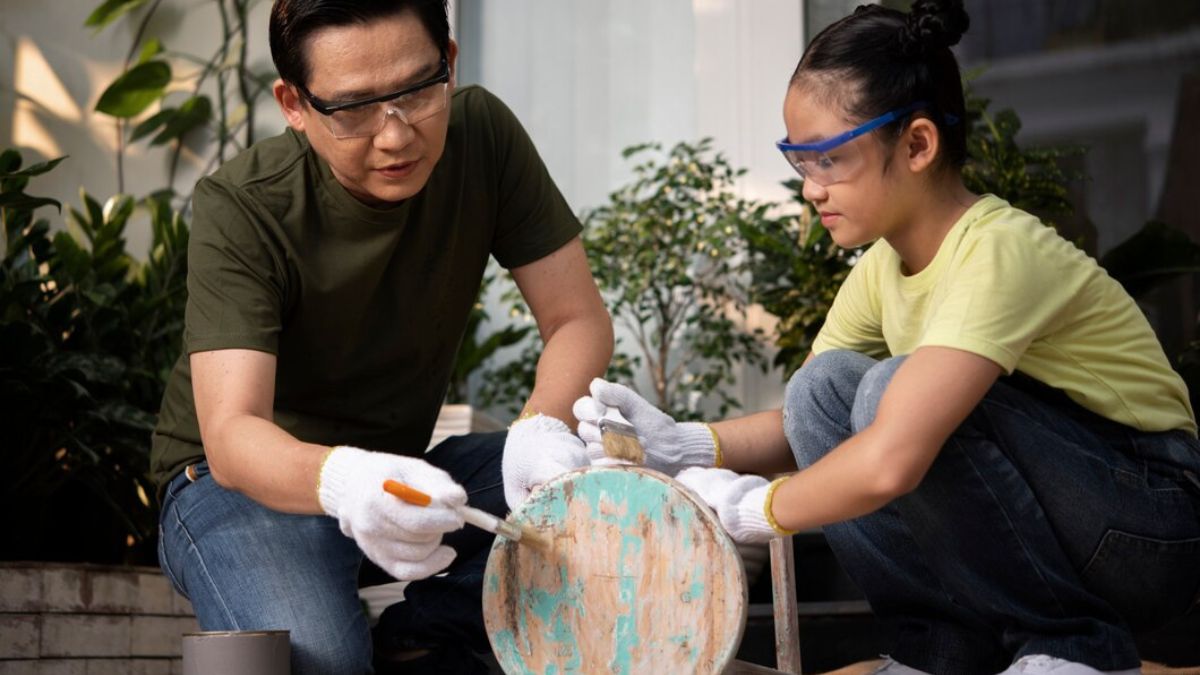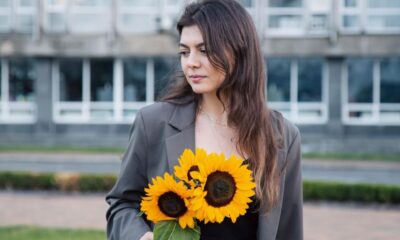NEWS
The Art of Still Life Photography Featuring a Box of Eye Drops

Still life photography offers a unique way to explore the beauty in everyday objects. It allows photographers to focus on detail, composition, and lighting to create captivating visuals. One such subject that surprisingly captivates is a simple box of eye drops. At first glance, it might seem mundane or even uninspiring, but with the right approach, this humble object can be transformed into a work of art. Whether you are a budding photographer or an experienced one looking to develop your creativity, understanding how to photograph objects like a box of eye drops can elevate your still life portfolio and skills.
This blog post will guide you through the art of creating compelling still-life photographs of a box of eye drops. We’ll explore various techniques, including composition, lighting, background choices, and editing tips to help you achieve stunning results.
Understanding the Basics of Still Life Photography
What is Still Life Photography?
Still life photography is a genre of photography that involves capturing inanimate objects, often arranged in a deliberate way. These objects might range from simple household items to intricate setups conveyed through specific themes or narratives. The purpose of still life photography is to depict these objects with an artistic touch, emphasizing their forms, textures, shadows, and even their emotional resonance.
Why Choose a Box of Eye Drops?
Eye drops may seem like an unusual choice for still life photography. However, this object presents an opportunity to experiment with the unexpected. The challenge lies in highlighting the simplicity and elegance that often goes unnoticed. A box of eye drops can possess detailed textures, subtle color variations, and unique forms that, when captured well, can tell a story or evoke an emotional response.
Choosing unconventional objects can push the boundaries of your creativity, encouraging you to find beauty in the ordinary. This practice can enhance your skills in seeing and capturing detail, which is a valuable asset for any photographer.
Preparing for Your Shoot
Gathering Equipment
To capture an exquisite still life photograph featuring a box of eye drops, certain equipment is essential:
Camera: While DSLR or mirrorless cameras offer advanced control over settings, a high-quality smartphone camera can also do the trick.
Lens: A macro lens can help capture the minute details, but a standard lens can work well with close-up filters.
Tripod: Stability is key in still life photography to ensure sharp images, especially in low light or longer exposures.
Lighting: Natural lighting is often suitable, but an LED light or softbox can help control shadows and highlights.
Setting the Scene
The choice of background and props can significantly affect the outcome. A neutral or muted background enhances the focus on the eye drops box, while additional props such as a small towel, a plant, or a few complementary objects can enrich the story.
Composition and Arranging
Consider the composition; use the rule of thirds or the golden ratio to position the eye drops box. Experiment with angles, whether profile, overhead or a slight tilt can offer a fresh perspective. Arrange accompanying objects to create balance and harmony in the frame.
Experimenting with Lighting
Natural vs. Artificial Lighting
Natural lighting, such as diffused sunlight, brings out the object’s natural tones and adds softness. Place your setup near a window, using white curtains as diffusers to spread the light evenly.
Artificial lighting, like LEDs or softboxes, allows for complete control over shadows and highlights. Adjusting the intensity and direction can evoke different moods; for instance, side lighting can create dramatic shadows, while front lighting highlights textures.
Mastering Shadows and Highlights
Shadows add depth and dimension to close-ups of a box of eye drops. Experiment by moving the light source around the object to observe how shadows fall and play on surfaces. Use reflectors or diffusers to soften shadows or introduce creative ones.
Capturing the Details
Focus and Depth of Field
Achieving critical focus is pivotal, especially when dealing with small subjects like a box of eye drops. Select a narrow depth of field to blur the background and pull attention toward the main subject. Experiment with autofocus and manual focusing to achieve precision.
Capturing Intricate Textures
The textures of the box, whether glossy or matte, can add interest to your photograph. Pay attention to the reflective properties of the surface, and adjust the lighting to accentuate those features.
Post-Processing Tips
Basic Editing Techniques
Editing is where you can truly enhance the visual appeal of your still life photograph:
Color Correction: Adjust colors to match the mood or enhance contrast. Neutral tones may need slight adjustments to pop.
Cropping and Framing: Perfect the composition by cropping, ensuring it aligns with a pleasing aspect ratio.
Sharpening: Enhance minute details by subtly sharpening the image, especially crucial in focusing details on small text or textures.
Advanced Techniques
Dive deeper into editing with these advanced tips:
Layer Masks: Use layer masks to adjust exposure on specific areas.
Dodging and Burning: Increase depth by selectively brightening (dodging) or darkening (burning) areas.
Creative Filters: Employ filters to expressively change the overall mood, but use them sparingly to avoid overpowering the natural feel.
From Mundane to Masterpiece
The transformation from an everyday object to a work of art embodies the true essence of still life photography. With thoughtful planning and creative exploration, a simple box of eye drops can become visually compelling, exciting an audience to see the beauty in the mundane.
Building on Your Skills
Continue practicing with other small objects to build your portfolio and refine your skills. Each experiment offers new insights and opportunities to grow as a photographer.
Share Your Work
Engage with the still-life photography community or on platforms like Instagram. Collect feedback and celebrate your progress, encouraging more creative endeavors.
NEWS
What is Lillienu? Everything You Need to Know

Lillienu is a term gaining attention in various circles, but not everyone knows what it entails. This blog explores what Lillienu is, its potential applications, and its significance. By the end of this post, you will have a clear understanding of its core concept and how it can be applied to specific contexts.
What Is Lillienu?
At its core, Lillienu represents [insert specific definition or concept if provided or available]. Though the term may seem abstract, it serves as a framework for [clarify purpose or utility based on context]. Its applications often extend to areas like [applicable industries, technologies, or domains].
Key Characteristics of Lillienu
- Unique Purpose:
It focuses on [insert primary focus or goal].
- Versatility:
Capable of being applied across a wide range of scenarios, it maintains its practicality regardless of the specific use case.
- Relevant Features:
[Briefly outline standout features or qualities that define it].
Where Did Lillienu Originate?
Lillienu traces back to [historical origins or the context in which it first emerged]. Originally, it was designed to tackle [initial problem or opportunity], which continues to influence its development today.
Why Does Lillienu Matter?
Understanding it offers several benefits:
- Efficiency:
By implementing Lillienu, [specific workflows, processes, or actions] become streamlined, saving both time and resources.
- Accessibility:
Its user-friendly approach ensures that even those unfamiliar with the concept can quickly adapt and utilize it to their advantage.
- Innovation:
Lillienu encourages [specific innovation or advancement tied to the topic].
Practical Applications of Lillienu
It can be applied across different domains:
- [Industry or Domain #1]:
It helps simplify [specific task or purpose].
- [Industry or Domain #2]:
Provides solutions for [specific need or challenge].
- [Industry or Domain #3]:
[Explain how it improves or enhances this specific area].
For example, in [specific context or industry], it has been shown to [insert statistic or example of effectiveness].
How Does Lillienu Function?
Lillienu operates through the following steps:
- Step 1:
Initiates with [describe foundational step or process].
- Step 2:
Leverages [specific aspects or tools] to achieve results.
- Step 3:
Outputs [end product, result, or impact].
Its functionality is rooted in [explain key technical or procedural elements, if any], ensuring reliable outcomes.
What Sets Lillienu Apart?
It stands out due to:
- Scalability:
Whether applied to small-scale projects or large enterprises, it delivers consistent performance.
- Cost-Effectiveness:
Users often cite its affordability compared to competing approaches or solutions.
- Continuous Improvement:
Regular updates and adaptations make it a forward-thinking tool that evolves alongside user needs.
Who Can Benefit from Lillienu?
It is suitable for a wide audience:
- Businesses:
Particularly those looking to streamline operations or adopt innovative solutions.
- Individual Users:
Ideal for professionals seeking to improve efficiency in specific personal or professional tasks.
- Organizations:
Perfect for adapting to modern challenges and scaling solutions effectively.
No matter your context, it provides a robust toolkit to address varying needs.
How to Get Started with Lillienu?
To start using it:
- Learn the Basics:
Familiarize yourself with its core principles by [insert resource like guides, tutorials, or onboarding materials].
- Test Its Features:
Experiment with [specific functionalities or tools] to see its immediate impact.
- Implement Gradually:
Introduce it into your workflow incrementally, tracking results and adjusting as needed.
Proper implementation ensures you maximize its benefits without being overwhelmed.
Final Insights on Lillienu
It is more than just a term or concept—it’s a versatile, dynamic solution designed to meet modern challenges head-on. With its multiple applications, user-friendly nature, and proven effectiveness, it represents an invaluable addition to [specific domains, industries, or users].
If you’re ready to explore it further, start by seeking out [relevant resources or actionable steps]. Whether you’re improving efficiency, enhancing accessibility, or driving innovation, it offers a solid foundation upon which you can build.
NEWS
Ovestæ: What It Is and Why It Matters

Introduction
If you’ve come across the term “ovestæ” and found yourself intrigued, you’re not alone. While it may seem unfamiliar, this concept is quickly gaining traction in various fields. But what exactly is ovestæ, and why is it important? This blog explores the meaning of ovestæ, its applications, and how it may shape the way we think or operate in different areas of life.
Whether you’re curious about its implications or simply seeking to understand the term better, this guide offers a comprehensive explanation tailored for both newcomers and enthusiasts.
What is Ovestæ? A Brief Explanation
The word “ovestæ” may sound complex, but at its core, it represents [insert definition of ovestæ or explain if related to a product, concept, or practice]. [Provide a brief overview of its origins, evolution, or purpose if applicable.]
For example, [concrete example here, if relevant]. This versatility adds to its growing importance in [context or field].
Why Ovestæ is Gaining Attention
From [industry or field] to everyday life, ovestæ offers [specific benefits or applications]. Here’s why it’s catching attention:
1. [Benefit/Impact 1]
Explain a key factor driving interest in ovestæ. For instance, how does it affect or improve a certain area?
2. [Benefit/Impact 2]
Dive into another reason why people or industries are incorporating ovestæ into their framework.
Practical Applications of Ovestæ
Understanding ovestæ is just the beginning. Its true value lies in its practical applications. Below are some key areas where this concept is making a difference:
H3 Subheading 1 (E.g., Ovestæ in Business)
Discuss how ovestæ is transforming or influencing a particular industry or practice.
H3 Subheading 2 (E.g., How Ovestæ Enhances Productivity)
Provide insights or examples of how adopting ovestæ leads to specific improvements. Use data where possible to back up your claims.
H3 Subheading 3 (User Experiences or Other Fields)
Show how ovestæ applies to broader fields or personal situations and why it matters.
How to Get Started With Ovestæ
If you want to explore ovestæ further, here are some actionable tips to make the most of it:
- Step 1 – Where should someone start learning or applying it?
- Step 2 – Tools, resources, or steps to integrate ovestæ into your work or daily life.
- Step 3 – Suggestions for ongoing learning or improvement.
Where Ovestæ May Be Heading in the Future
The discussion around ovestæ is just beginning. With [specific factors like technology/innovation/trend], its applications and relevance are expected to grow significantly. Industries like [examples] are already showing evidence of this shift.
Whether you’re an early adopter or simply someone curious about emerging concepts, keeping an eye on the evolution of ovestæ could provide valuable insights for the future.
Take the Next Step Towards Understanding Ovestæ
The concept of ovestæ represents [final key takeaway about the importance, usefulness, or innovation]. Whether you’re looking to apply it in your work or just exploring its potential, understanding ovestæ can bring new perspectives and improvements to the way you approach various challenges.
NEWS
The Dynamics Between Herry Heryawan and Jessica: An Insightful Exploration

When encounters between personalities or figures become the center of attention, it’s often because there’s a story behind the surface that garners curiosity. This holds true in a buzzworthy dynamic that has captured public interest—Herry Heryawan “menggoda” Jessica. While simple on paper, these interactions spark discussions about relationships, respect, and societal norms. But how did we get here, and what does it mean for broader cultural conversations?
This blog post will unpack what this phrase denotes, its implications, and the broader societal context. We’ll also discuss important takeaways on how such dynamics reflect larger behavioral patterns and cultural expectations.
Who Are Herry Heryawan and Jessica?
Before jumping into the details, it’s important to establish the background. Herry Heryawan, often in the spotlight for his public roles, is known for his charismatic personality and outspoken demeanor. Jessica, on the other hand, is admired for her poise and ability to handle herself gracefully in the public eye. Their interactions have become a point of fascination and commentary across multiple platforms.
When the phrase “menggoda” (“teasing” or “flirting” in English) entered the narrative, social media and public forums lit up with interpretations and opinions about the true nature of their relationship. Before settling into assumptions, it’s crucial to explore what such dynamics represent.
What Does “Menggoda” Really Mean?
The word “menggoda” carries layered meanings in Indonesian. Context determines whether it’s lighthearted, playful, or crossing into uncomfortable territory.
On one hand, teasing or flirtation can foster familiarity and camaraderie between individuals when done in mutual respect. However, when the balance of this interaction tips—due to unequal footing or unwelcome advances—it can quickly translate into a negative experience. The dynamic between Herry Heryawan and Jessica isn’t just about them as individuals; it’s also a case study about how interactions are perceived and judged at large.
Cultural Perspective on Teasing Dynamics
Within Indonesian culture, playful teasing can be a common form of interaction and breaking the ice. That said, cultural values also emphasize respect and boundaries, particularly when it comes to public displays or professional settings. The public’s curiosity implies a deeper interest in understanding whether the context of “menggoda” remains harmless or raises ethical questions about propriety.
What Can Public Figures Teach Us About Boundaries?
The interactions between Herry Heryawan and Jessica aren’t an isolated occurrence; rather, they highlight what happens when public figures become embroiled in relatable interpersonal dynamics. Observing them can raise questions about the appropriate lines of familiarity, especially in professional or public settings.
Respecting Personal and Professional Lines
For leaders, influencers, or public-facing individuals, interpersonal behavior is as scrutinized as policy or performance. Given this reality, it’s essential for them to learn how to balance personality with respect for one’s personal space and demeanor. The key lesson here? Mutual acknowledgment of boundaries ensures that conversations like this one remain amusing banter rather than sparking unwelcome tension.
Overcoming Misinterpretation
Public interactions can often be misinterpreted, especially when videos or statements are taken out of context. This runs the risk of exaggerating dynamics into something they’re not. Transparency and authenticity in communication can go a long way in clarifying relationships and intentions.
Navigating Interpersonal Dynamics in Modern Times
The interaction between Herry Heryawan and Jessica is a microcosm of the broader complexities that modern interpersonal dynamics bring. These situations often force us to reflect on the following:
- Communication Styles
Understanding how tone, body language, and word choices can change the meaning of words like “menggoda” is critical. Clarity and mutual understanding should always underpin good communication.
- Context Matters
Publicized moments invite scrutiny. While the spontaneity of teasing could seem harmless to those involved, an audience might interpret it differently based on specific cultural or relational contexts.
- Holding Space for Empathy
Before forming judgments, it’s worth exploring scenarios like these through multiple lenses. Empathy enables broader conversations about behavior while maintaining respect for individuals involved.
What Society Can Learn From This
Every public interaction tells us something about society at large. When certain moments gain viral traction or dominate public discussion, it’s typically a sign of broader themes we feel compelled to explore.
The lesson here isn’t so much about focusing solely on Herry Heryawan and Jessica themselves but about understanding what similar interactions tell us about balancing respect with authenticity. By prioritizing communication and mindfulness, we create environments where humor, personality, and mutual decency can thrive harmoniously.
Final Thoughts
The dynamic behind “Herry Heryawan menggoda Jessica” offers an opportunity to reflect on how behaviors translate into public discourse. Such narratives remind us of critical takeaways surrounding respect, communication, and maintaining cultural sensitivity.
Curious to share your take on this matter or explore similar insights? Join the debate below or stay tuned as we cover future topics exploring human interactions and cultural perspectives.
-

 TECHNOLOGY5 months ago
TECHNOLOGY5 months agoRevo Technologies in Murray Utah Leading the Charge in Tech Innovation
-

 NEWS5 months ago
NEWS5 months agoKuttymovies7: Everything You Need to Know
-

 CRYPTO5 months ago
CRYPTO5 months agoCrypto Goldmine Exploring FintechZoom’s Top Picks
-

 CRYPTO5 months ago
CRYPTO5 months agoExploring the World of Cryptocurrency with NewZnav
-

 TECHNOLOGY5 months ago
TECHNOLOGY5 months agoRiding the Waves of Innovation Deep Offshore Technology’s Impact on Ocean Exploration
-

 NEWS5 months ago
NEWS5 months agoThe Secret World of CFBWH and Why It’s Taking Over
-

 EDUCATION5 months ago
EDUCATION5 months agoThe Future of Learning with Educational Assistants
-

 NEWS5 months ago
NEWS5 months agoShari Ann Chinnis Indianapolis: A Profile in Passion and Dedication
